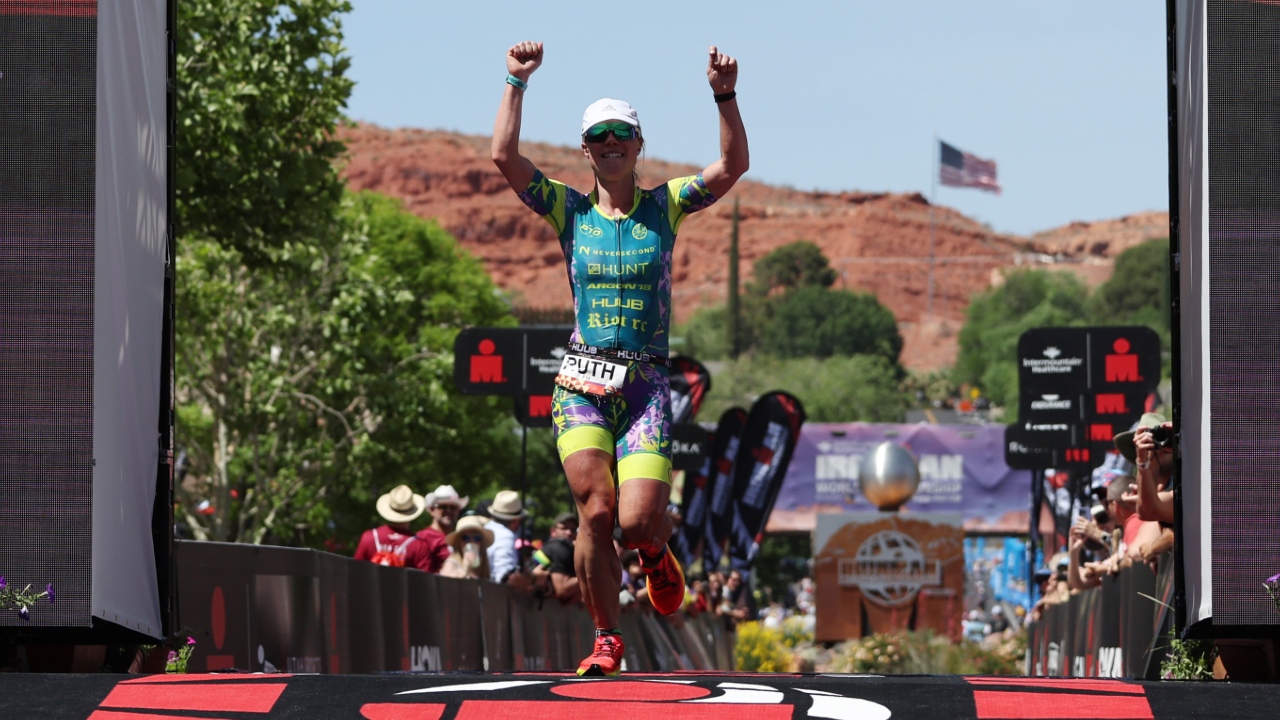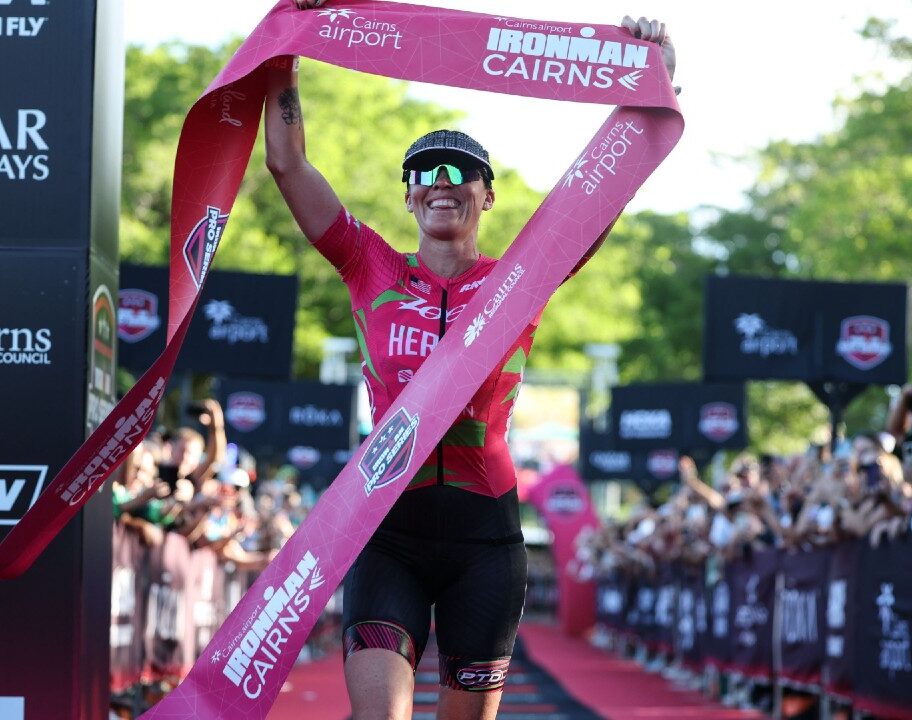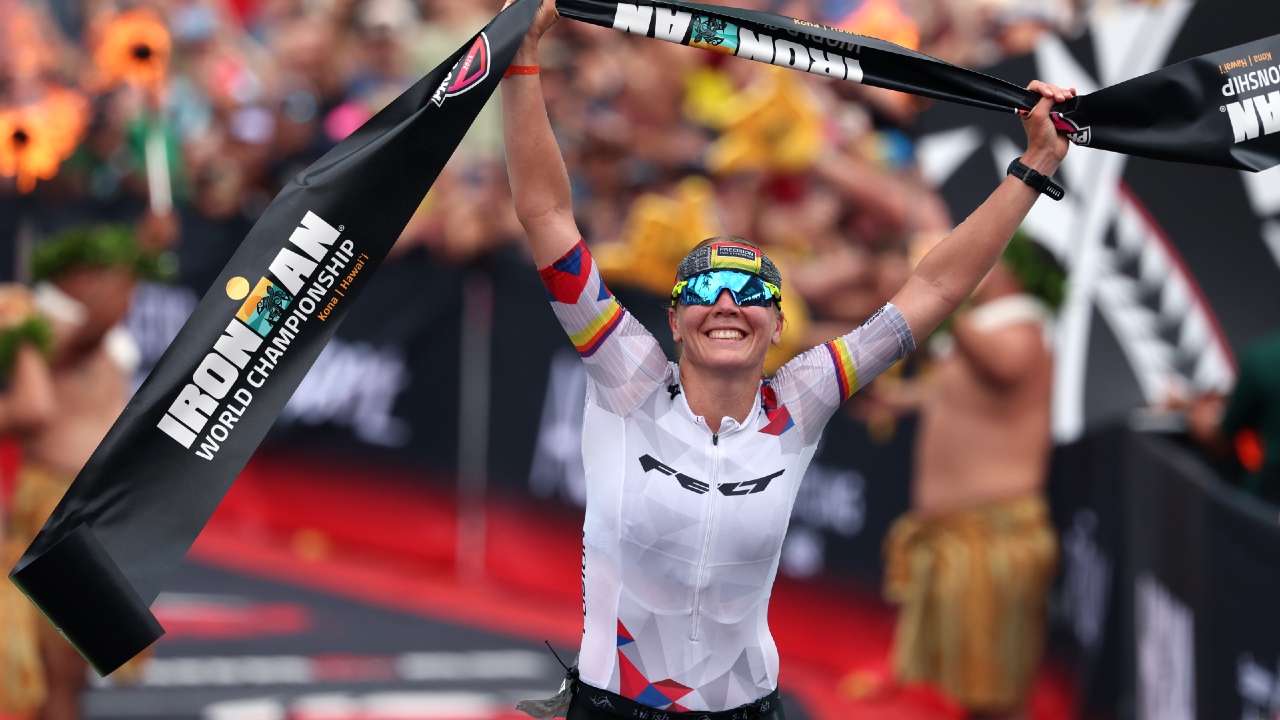How do you become a professional triathlete? A question that doubtless many people ask themselves, particularly on the back of an epic event like the recent Olympic Games which provides so much mainstream interest.
The great thing is this is a sport where being an elite athlete as a child is not a must, and British star Ruth Astle is the perfect advert for that. She is racing proof that coming into it late is not a barrier to success.
Since becoming a professional, Ruth has been an Ironman champion on multiple occasions – in Mallorca and South Africa in 2021 and in Israel in 2022. She also finished fifth in the delayed 2021 IRONMAN World Championship in St George in May 2022. Throw in a slew of other excellent results, and it has been quite the career in a relatively short space of time.
How did the journey begin?
Now, with Astle preparing for the upcoming 2024 IRONMAN World Championship in Nice, she has spoken about her journey. One which started by chance at work, with the offer of a charity place in a triathlon.
Speaking in a video update on her YouTube channel (watch the full version at the foot of this article), Ruth explained: “It was actually through my previous job at Lloyds. They had a charity place at the London Triathlon and they offered it to me. At the time I was training for the Berlin Marathon and I was little bit bored of running and I was like ‘I know how to swim, I have a bike, I’ll give it a go’.
“Gave it a go, really enjoyed it. I’d recently moved to London and was kind of looking for something active, maybe competitive, to do because I’d played a lot of field hockey through university but hadn’t found anything like that in London when I’d been there.
“Did the triathlon, really enjoyed it and as a result then joined up with my local Tri club because I thought that would also be a good way of meeting new people in London, and yeah it all just kind of stemmed from there.”
Joining a club turned out to be the perfect move for Ruth, who said: “From there I started doing the training, I really enjoyed it, I met this really great group of friends – some of whom are now still my best friends – and spent that first year in 2014 doing loads of the London league races, Just picking up entries basically of where other people were dropping out.

International honours with GB
“Through 2014 I basically started hearing about being able to represent your country as an Age Grouper and then decided that sounded really cool – like I can race for GB. I made that my mission to do that for the next year, so qualified then for the European Duathlon Champs in 2015 and the Olympic Distance Champs, did both of those.
“The Olympic Distance Champs in Chicago, I kind of realised pretty quickly that my swim and my run were nowhere near good enough at that distance to be competitive, decided to move up the distances. I’d also by this point, because I’d been in the Triathlon club, started hearing people talk about this mythical place in Kona.
“I was like ‘what is this Kona thing people are talking about?’ Even at this point an Ironman just seemed absolutely crazy, I was like how can people do that, that just seemed so long and so hard. But yeah, moved up to the 70.3 distance, enjoyed that, was doing quite well at that, and then decided that I was going to have to take the plunge and in 2017 did my first Ironman.”
Ruth could not have chosen a more difficult start to her career at the full distance, but there was method to the madness.
An Ironman baptism of fire
She explained: “Did Lanzarote – my coach at the time was like ‘that’s a terrible idea, that’s really hard’. I was like well if I want to go and do Kona then I might as well do a hard one, at least then I know if I can do a hard one that Kona maybe won’t be as hard.
“It went really badly, there was a combination of things, I think I over carb loaded , I was sick in the swim, I had to do two toilet stops on the bike and then the marathon was basically find every Portaloo I could find. So it didn’t go according to plan.”
Despite that baptism of fire, Ruth finished third in her Age Group and managed to get a Kona spot on rolldown. She was heading for the ‘Big Island’ after just one race at the full distance, and Hawaii would be much more fun than Lanzarote!
“I thought it can’t be as bad as Lanzarote, and it wasn’t, it was alright. I came third in my Age Group and had a much better time that Lanzarote.”
Bitten by the bug
By now Ruth was firmly bitten by the triathlon bug, and starting to think about the possibility of racing as a professional. For somebody who hadn’t been an elite athlete as a youngster it still felt like an ‘alien thought’.
Astle now had a plan though, a two-pronged approach to proving that going pro was both feasible and the right thing. Becoming an overall Age Group winner at Kona to prove to herself she was good enough, and getting a job senior enough to be able to go part-time or sabbatical and still get back into it afterwards.
The job part at Lloyds came in 2018/19 but 50-60 hours a week plus training were a significant drain. Ruth did win her Age Group at Kona but only finished third overall. She was still only six months into her new role, and decided the time was not yet right to go professional.
“I decided to give myself another year and then I also got into the Zwift Academy, which was like the most amazing kind of journey that year. The support from that really helped in the year up to Kona.
“Had a good year other than a bit of a crash post-Roth, which was 11 weeks before Kona. Broke my collarbone – I was like ‘oh, the dream’s over, there’s no way I can get back and win the overall race’.
Taking the plunge, going Pro
Despite the doubts, and the disrupted preparation, Ruth did win the race, and now she was ready to take the plunge. She took her Pro licence, was able to go part-time in her job, and a career as a professional triathlete was at last for real.
The rest is now very much a success story with Ruth proving she is able to cut it at the very highest level, notably with those Ironman victories and that terrific performance in St George in 2022. She is now a full-time triathlete too after leaving Lloyds.

As she looks ahead to Nice, Ruth can also offer sage wisdom about the transition from novice Age Grouper, to hardened professional.
“The transition from Age Group to Pro – you hear about it from lots of different people in terms of what it’s going to be like and that it’s going to be harder than you think, definitely harder than you always expect it to be, I think mainly from a mental perspective of you kind of get used to winning as an Age Grouper, then you’re coming in and you’re generally more towards the back of the pack.
“I think for someone like me as well, where swimming is not my strength, potentially the racing doesn’t feel that different because often for me it’s still quite a solo time trial.”
Biggest advantage of being a Pro
So while Ruth’s style of racing means the change for her has not been seismic from a competition dynamic, there is one major benefit to being a full-time Pro. Recovery.
“I think people assume you’re going to be training way more, but actually you know I think the biggest advantage comes from the recovery time, so mainly for me it’s been sleep. Like I now get on average eight-and-a-half to nine hours sleep at night compared to the five-and-a-half I was getting before.
“I think that recovery is the biggest advantage.”







![Caroline Livesey wins the first ever Scottish National Gravel Championships in August 2025. [Photo credit: Outsider Events]](https://www.tri247.com/wp-content/uploads/2025/11/Caroline-Livesey-scots-national1.jpg)













